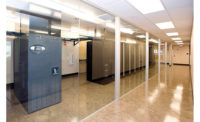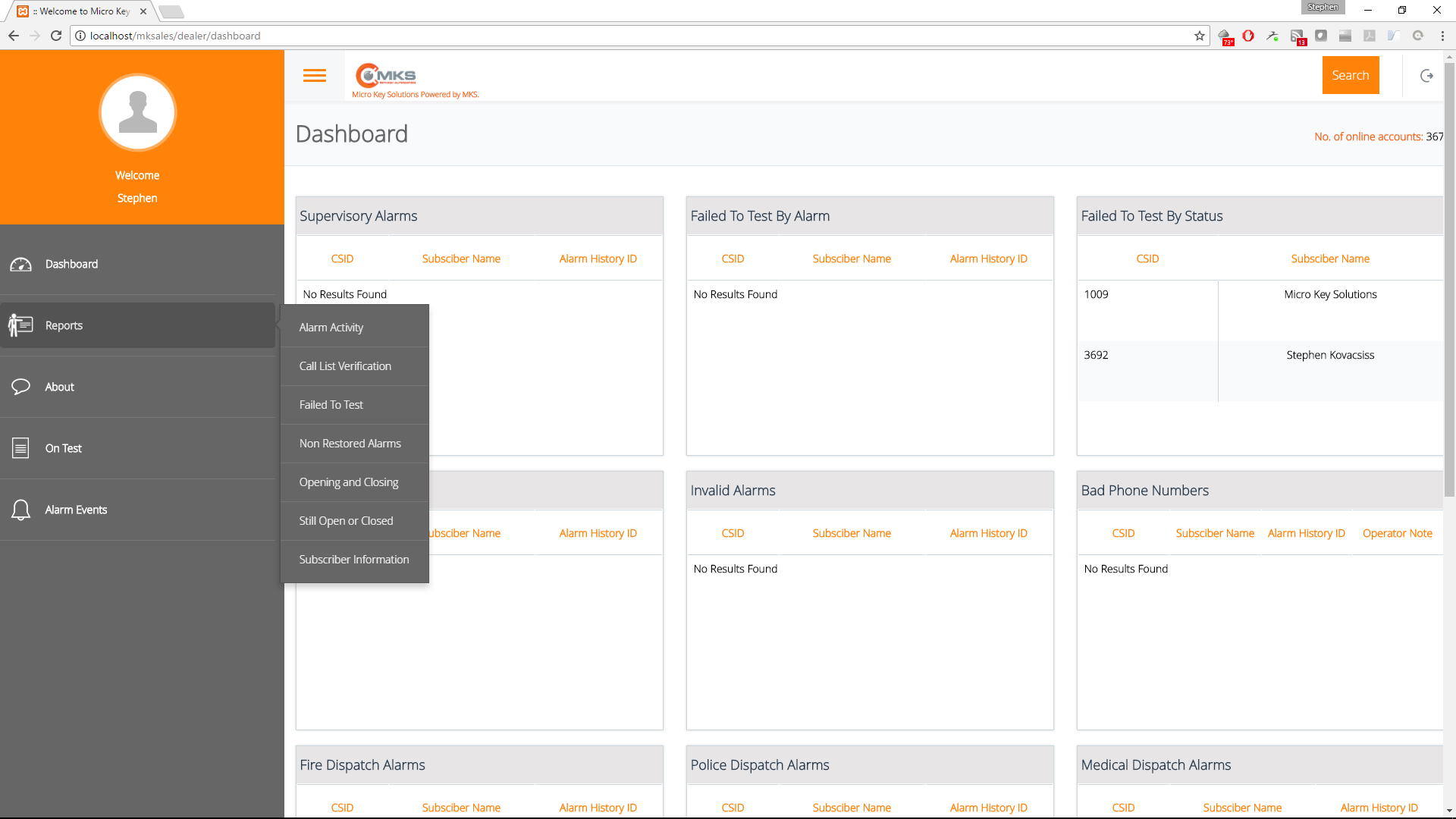MONITORING
What's Hot in Central Station Software
Central station software vendors streamline, enhance video capabilities and offer open interfaces to enable a wide range of new applications.

SureView Systems is moving from Flash-based video to HTML 5 to reduce power requirements.
IMAGE COURTESY OF SUREVIEW SYSTEMS

Central station software from Bold Technologies can give operators the ability to control a variety of cameras from a single control point.
IMAGE COURTESY OF BOLD TECHNOLOGIES

Some central station software gives dealers the ability to generate useful reports.
IMAGE COURTESY OF MICRO KEY SOLUTIONS



The role that the central station plays in the security industry keeps expanding. Once focused almost exclusively on dispatching police or fire, central stations now are called upon to provide increasingly sophisticated video verification, monitoring for the internet of things and numerous other functions.
Central station software is critical to enabling central stations to provide this functionality. We talked to several central station software providers about new capabilities they have added recently or plan to add in the future.
We also asked each provider to tell us their most important development right now. Here’s what they told us.
AlarmSoft Integrates Video Verification With Central Station Software
More and more police departments are requiring video verification, dispatching only when the central station has confirmed the presence of an intruder. As video verification becomes more important for central stations, some central station software providers — including Virginia Beach, Va.-based AlarmSoft — are enhancing their software to streamline the video verification process.
As AlarmSoft General Manager Chris Brackett explains, “If you have a door with an alarm and a camera watching the door, in the past you had two systems. We’re pulling them both together. We bring the signal in and the video right behind it.”
AlarmSoft’s interface for this capability allows the operator to view up to 16 cameras at a time and provides controls that are similar to those on a digital video recorder.
“You can take a snapshot, record a clip, or say, ‘Keep this camera open,’” Brackett explains.
Ease of Integration Is a Priority for Bold Group
“Flexibility with integration is probably the most important thing right now. ... You need a flexible architecture for integration with new and upcoming security products.”— Dan Reynolds, Bold Group
A central station software company that is focusing on easier integration with products from other companies is Colorado Springs, Colo.-based Bold Group.
“We have APIs [application programming interfaces] to do these integrations,” observes Dan Reynolds, vice president of operations for Bold Group. The company has had the APIs for some years, but has seen greater interest in them over the last year or so.
He notes, for example, that a central station might be called upon to monitor a robot that moves around a construction site to provide security and sends live IP alarm transmission. An API can make it easier to support that capability.
Bold Group also has implemented HTML 5 and has launched what the company calls “Enhanced Action Pattern.” As Reynolds explains, that capability gives the central station software the ability to build “and/or” statements.
“It helps us build a pattern that we can easily apply one-to-many,” he adds. “If a customer wants special instructions applied to all their accounts, it’s easy to do.”
More Online
For more information about central station monitoring, visit SDM’s website where you’ll find the following articles.
“Cyber & Network Security for Central Stations”
www.SDMmag.com/cyber-network-central-stations
“Profiles in Video Monitoring”
www.SDMmag.com/profiles-video-monitoring
“Video Monitoring Goes Mainstream”
www.SDMmag.com/video-monitoring-mainstream
“7 Emerging Central Station Trends”
DICE Provides Video Evidence After Dispatch
“After dispatch, some police departments want to see video. ... We send a link to the police to show why the dispatch happened.” — Cliff Dice, DICE Group
DICE Group also has integrated video verification with its central station software.
As Cliff Dice, CEO and president of DICE Group, notes, some police departments now want to see a video clip associated with any alarm signal that led to a dispatch within 24 hours after the dispatch occurred. DICE meets this requirement by recording video images in the central station and in the cloud and sending a link to the police.
Another new capability for DICE is the ability for end users to cancel signals from nuisance alarms via a text message before the signals are sent to the central station.
“The central station doesn’t have to call you and you don’t have to call them,” comments Dice, who notes that this capability also can cut down on central station activity by 40 percent.
Open API Is Key Value Proposition for Micro Key Solutions
“An open API structure gives the most flexibility and opportunity to our end users.” — Chuck Speck, Micro Key Solutions
A company that sees great value in open APIs is Kissimmee, Fla.-based Micro Key Solutions. As Micro Key Executive Vice President Chuck Speck observes, “We’ve had to become much more open in our architecture and develop APIs.”
A key goal of the open APIs is to enable the central station to respond to a wide range of signals, whether they come from a traditional alarm receiver or via email, text messages, extensible markup language (XML), or open database connectivity (ODBC). A new Internet of Things module from Micro Key supports signals of all those types, Speck says.
He points to the example of a university that developed a smartphone app designed to enable students to summon help and send videos to campus police. Traditionally, a central station software vendor might do periodic software upgrades, with each upgrade supporting a range of capabilities requested by a different central stations. Open APIs eliminate the need to wait for that process to occur, Speck explains.
Micro Key also has made enhancements to its billing software, which interfaces with its central station software. The enhancements give central stations the option of billing customers for monitoring for a specific time period — a capability Speck sees becoming of increased interest to consumers as they experience that capability from other types of companies.
SureView Replaces Flash With HTML 5
“HTML 5 is lighter, faster and more flexible. ... It’s a game-changer.” — Chris Brown, SureView
A key initiative for Tampa, Fla.-based SureView Systems this year is to eliminate Flash technology from its central station software.
“Security video, as a whole, in the early days was built in Flash,” explains Chris Brown, vice president of the central station and guard force division at SureView. But moving forward, SureView will rely instead on HTML 5.
“HTML 5 is lighter, faster and more flexible,m”
Using HTML 5 eliminates the need to transcode every video, which requires CPU usage, he explains. Some of SureView’s offerings already use HTML 5 and according to Brown, central stations using the software are seeing a decrease in CPU power requirements of 50 percent to 70 percent, which can save costs. He also notes that HTML 5 uses less expensive hardware.
SureView also has made innovations involving video verification. The company’s First Line interface is designed to make it faster and easier for central station operators to verify alarms by providing a single video window and a single button to say “yes” or “no” about whether the clip merits a dispatch. The offering does not replace but rather offers an alternative to more complex video verification capability.
Additionally, SureView this year launched a cloud-to-cloud integration protocol to enable the company’s central station software to integrate easily with video management systems or other systems. Benefits include more seamless firmware updates for central stations, notes Jason Caldwell, director of operations, marketing and support services for SureView.
Looking for a reprint of this article?
From high-res PDFs to custom plaques, order your copy today!












